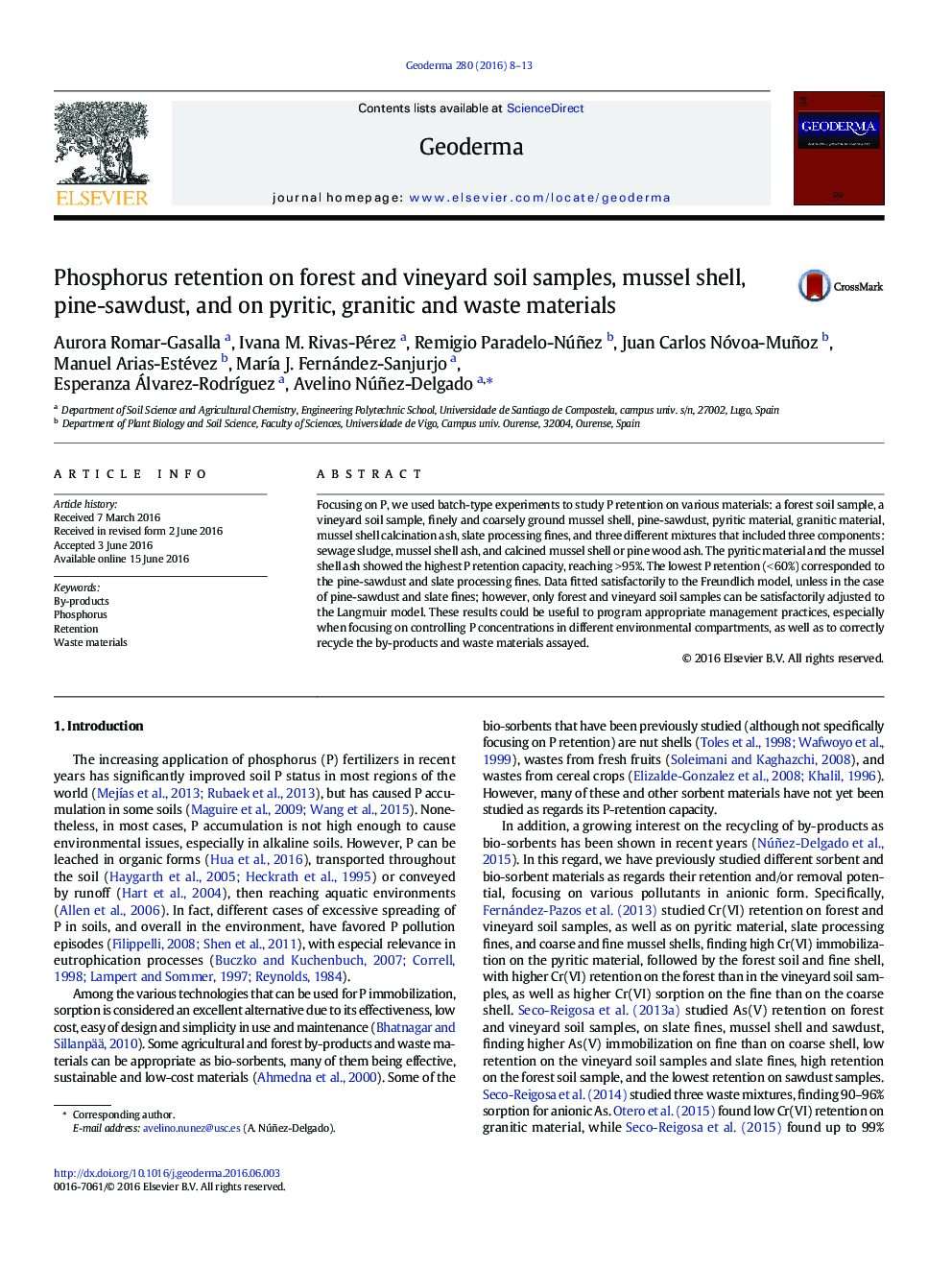| Article ID | Journal | Published Year | Pages | File Type |
|---|---|---|---|---|
| 4572830 | Geoderma | 2016 | 6 Pages |
•We study P retention on soil samples, by-products and waste materials.•The pyritic material and mussel shell ash showed the highest P sorption (> 95%).•The lowest P sorption (< 60%) corresponded to pine sawdust and slate processing fines.•Sorption data fitted satisfactorily to the Freundlich model in most cases.
Focusing on P, we used batch-type experiments to study P retention on various materials: a forest soil sample, a vineyard soil sample, finely and coarsely ground mussel shell, pine-sawdust, pyritic material, granitic material, mussel shell calcination ash, slate processing fines, and three different mixtures that included three components: sewage sludge, mussel shell ash, and calcined mussel shell or pine wood ash. The pyritic material and the mussel shell ash showed the highest P retention capacity, reaching > 95%. The lowest P retention (< 60%) corresponded to the pine-sawdust and slate processing fines. Data fitted satisfactorily to the Freundlich model, unless in the case of pine-sawdust and slate fines; however, only forest and vineyard soil samples can be satisfactorily adjusted to the Langmuir model. These results could be useful to program appropriate management practices, especially when focusing on controlling P concentrations in different environmental compartments, as well as to correctly recycle the by-products and waste materials assayed.
